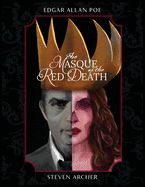I know we just visited the topic of “where did all the boys as protagonists go” not that long ago but a piece I just read in The Mary Sue made me want to come back and look at it from another angle. The article, which is totally not about YA horror fiction, talks about three female protagonists of vampire media franchises from the 2000s, all of which are grounded in horror fiction tropes: Elena Gilbert of The Vampire Diaries (based on the YA series by L.J. Smith), Sookie Stackhouse of True Blood (based in the Southern Vampire Series by Charlaine Harris), and Bella Swan (from the YA series Twilight)
So you don’t have to read the entire thing, the essence of the article was that the author saw in all three of these characters that they were defined by their romantic relationships– that their stories wouldn’t have existed without their love interests. All three of these characters are caught up in (straight) romantic triangles (which I guess makes them more of romantic V’s)– and their role in triangles end up, for the most part, erasing the rest of their character, even though they are supposedly the protagonists,
The 2000s and early 2010s were a pretty good time for YA horror with boys as protagonists, though. Cirque du Freak by Darren Shan was very popular, and I know that here at Monster Librarian we read a lot of books where boys were, at the very least, point of view characters. Harry Potter drew a lot of those kids into a darker fantasy as well– the last book came out in 2007, just before my cousin turned eighteen. And in Harry Potter, there is a spark for change, because smart girls and passionate women save the day over and over, waiting for doofus teenage boys to get a clue about saving the world. And girls who grew up with Harry Potter noticed, and wanted the girls in their books to be the heroes (and villains) of their own stories. And thus we get Jane McKeene from Dread Nation, who is strong, smart, and commonsensical; murderous Nita from Only Ashes Remain; the troubled girls of Sawkill Girls who alternate between being victims, villains, and survivors.
I don’t know why so many men turned away from writing books with boys as protagonists. But what we’re seeing now is, I think, the product of women seeing themselves erased from the types of stories they grew up loving, and wanting to see not just themselves but also a growing diversity in the kinds of protagonists we see in YA novels (or any novels, or any writing). They are hashtagging #WeNeedDiverseBooks and #OwnVoices because additional voices, their voices, need to be heard. Fear is just part of girls and women’s daily lives, and I don’t think enough people realize quite how scary it can be.
But there’s a lot of fear to face in today’s world that is not exclusive to women and girls (hello, climate change, genocidal dictators, twisted social media policies, hate crimes, cyberbullying, school shootings). Who is writing the stories that resonate with boys today? Somebody needs to open their eyes past what they’ve seen of themselves so far. Yes, male characters have taken center stage for many years, but do we really want stories written in the past that make us cringe today to be the models we give those kids?
Let’s move forward with authors coming up with great stories that will showcase original characters and engage all kinds of readers. That’s our goal in libraries, right? It’s my goal, anyway. There are so many good books coming up, and I can’t wait to see what kids of vibrant writing lies ahead.






Follow Us!